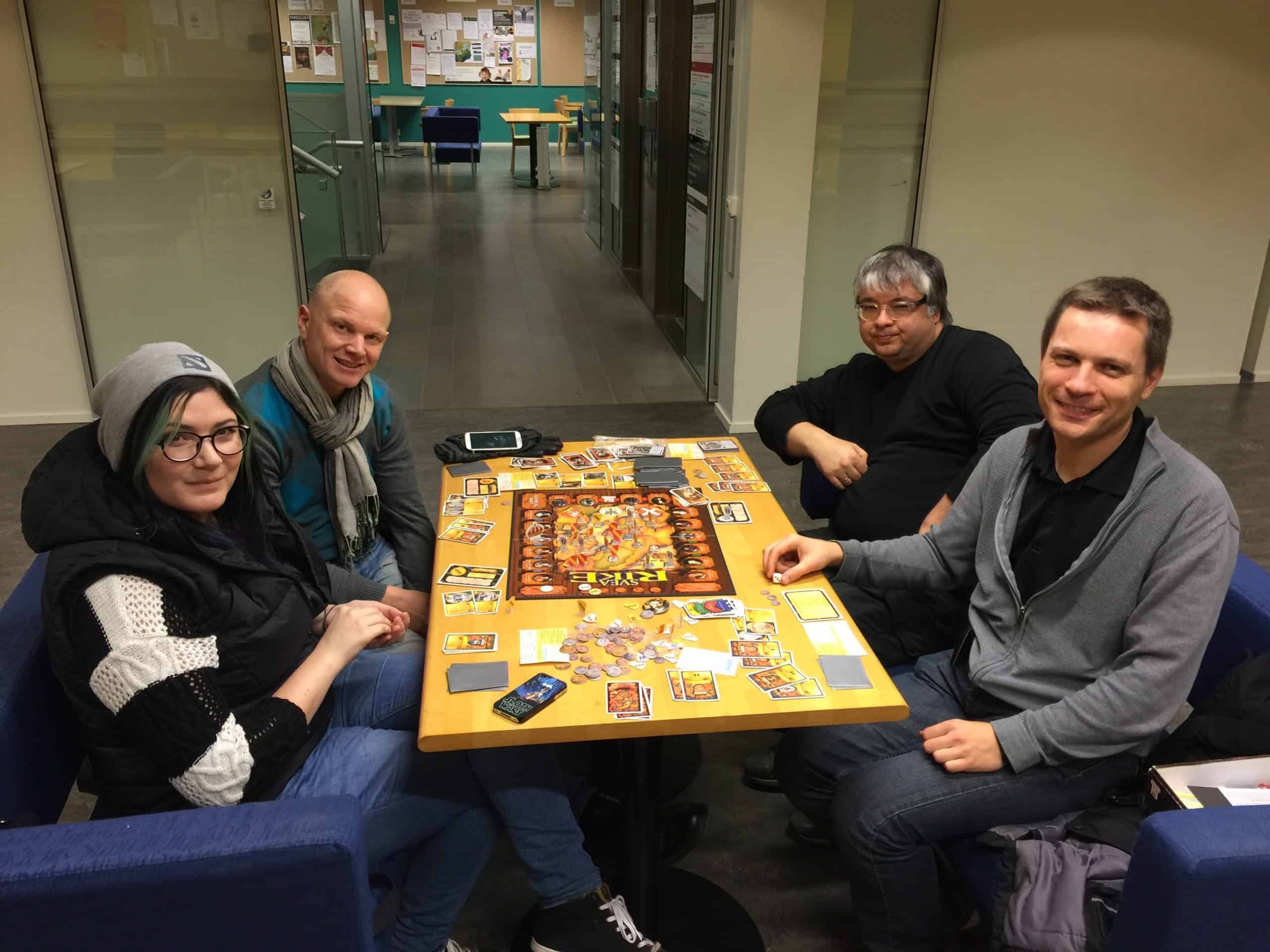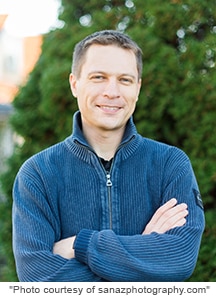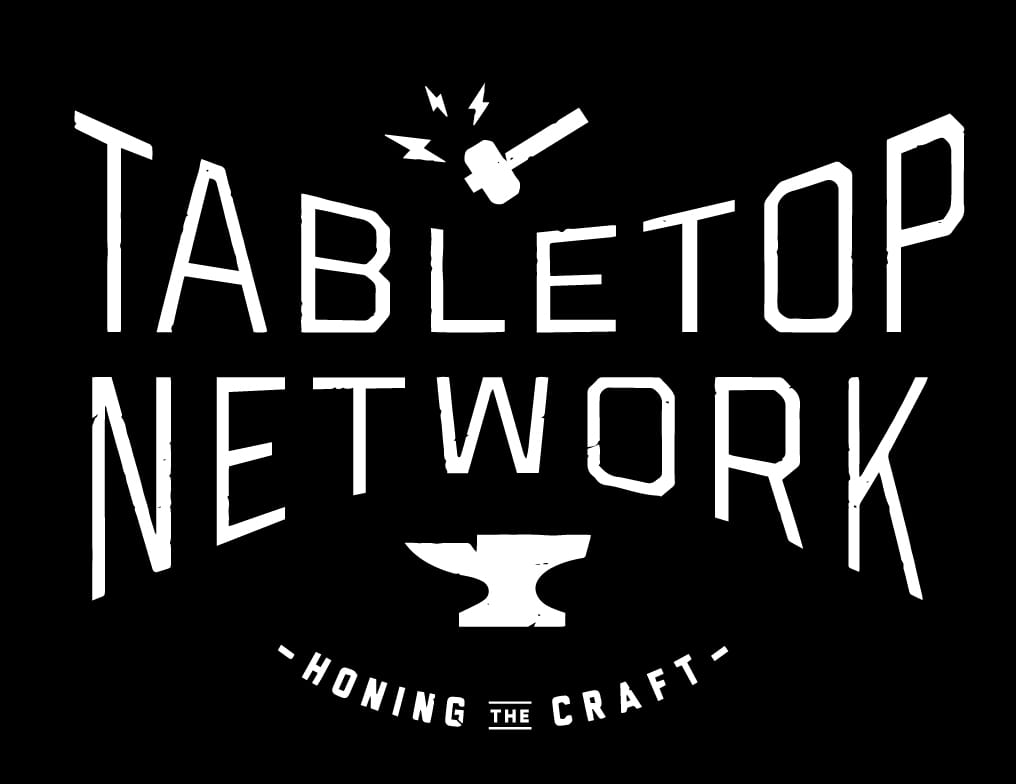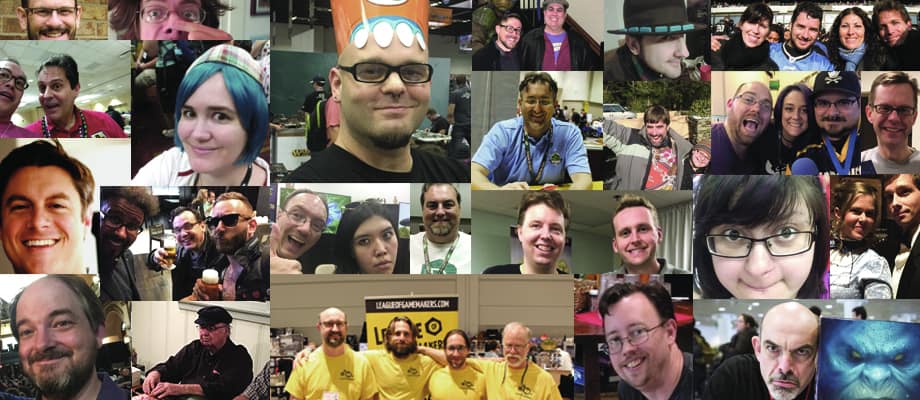
 Through the technology of the internet, the League was able to interview Martin Hagvall a game designer and a faculty member of the University of Skövde in Sweden teaching Game Design.
Through the technology of the internet, the League was able to interview Martin Hagvall a game designer and a faculty member of the University of Skövde in Sweden teaching Game Design.
Martin has a Southern California connection with the gaming community and has taught Game Design at both the Art Institute of California in Santa Monica and the Los Angeles Film School.
- LEAGUE:
Tell us about your recent return to Sweden and your current work.
- MARTIN:
After ten marvelous years in Los Angeles, I moved back to Sweden last spring. In Sweden, I am a member of the faculty of the University of Skövde, where I instruct Game Design and related areas (Game Studies, Game Narrative, etc.).
It’s an exciting environment to work in as the school has the largest game faculty in Northern Europe with nearly 50 instructors and researchers involved in five Bachelor Degree programs, two International Master’s and a number of research projects in many different fields pertaining to games, including Serious Games. Yet the University as such is small and it is located in a small town, so there’s an entrepreneurial spirit that appeals to me.
Apart from instructing, I also contribute to the international platform Sweden Game Arena in which my University, the City of Skövde and the local game industry (housed and nurtured next door at the ambitious Gothia Science Park) have started to collaborate to actively promote the symbiotic relationship between academia, government and industry that has given rise to one of the largest clusters of indie/small game companies in Sweden, including Coffee Stain Studios which recently released the hit Goat Simulator and a branch of Paradox Interactive, well known for its strategy games (e.g. Europa Universalis).

University of Skövde
…HAVE STARTED TO COLLABORATE TO ACTIVELY PROMOTE THE SYMBIOTIC RELATIONSHIP BETWEEN ACADEMIA, GOVERNMENT AND INDUSTRY…
- LEAGUE:
You indicated that there was something about your work at the University that might be of particular interest to our readers. What was that?
- MARTIN:
A main reason why I sought employment here, is that the University of Skövde has a strong “pure” Game Design tradition that emphasizes rules and principles. Students in the Game Design Bachelor’s Degree take a great number of courses that relate to building game mechanics and interactive, rule-based systems; board games are used in several of them. Two full courses use exclusively card and board games for this purpose. Both Program Directors of the Game Design Degree Program, Sanny Syberfeldt and Jenny Brusk, have a firm grasp of the intricacies of game design in all its forms, and Sanny, who has been instrumental in building the board game courses, is also a long-standing member of the board gaming community in Western Sweden. It’s most gratifying for me to work with these and other members of the faculty and to teach in these courses.
- LEAGUE:
The League and its readers are certainly interested in game mechanics and rule-based systems. The League recently posted a three part discussion of Mechanics vs Theme in game design: mechanics, thematic & dichotomy.
- MARTIN:
I think that the League has made great contributions to game design discourse in general, and also to this very important issue. The nature of and distinction between rules and narrative is certainly very topical in the game research community as well. I personally believe that narrative contents often are extremely important and I take great joy in lecturing about interactive storytelling, etc in game courses. At the same time, I recently delivered a presentation of the doctoral course Historical Representation in Games at the University of Gothenburg. In this, I suggested, based on theories (and an analysis of the game Svea Rike), that the mechanics in games, including those in board games (and particularly those that model processes), can communicate strong societal meaning, even when the theme in and of itself may not be particularly persuasive. So there are certainly many different perspectives on this topic to consider.
- LEAGUE:
Tell us a little about your gaming outside of your University activities.
- MARTIN:
I enjoy playing both video games and board games with friends and family. As to my involvement in organized board game activities, I have joined the club Gothenburg Boardgamers in my hometown. This group meets several times a week in the town’s Game House (“Spelets Hus”) which is run by the Swedish Gaming Federation, a non-profit umbrella organization which – quite impressively – is the largest youth organization in Sweden. The Club has a large selection of board and card games on its premises, especially Designer Games, and sometimes members bring their own prototypes for testing as well.
Another group that I’d like to mention is what I would refer to as the “Gathering”, a group of board gamers and designers that meet twice a year for three days at a quaint hotel in the beautiful city of Varberg. This group started more than ten years ago as an initiative taken by a few enthusiasts, including myself, but ironically I was never able to attend until this year, since I moved to Los Angeles before the first Gathering took place.

Martin Hagvall, Tara Copplestone (New Zealand), Adam Sofronijevic (Serbia) and Magnus Åkerman (Sweden) play the Swedish board game Svea Rike at the doctoral course Historical Representation in Games at the University of Gothenburg.
- LEAGUE:
Speaking of your move to Los Angeles, tell us about your experience in Southern California.
- MARTIN:
Among many wonderful things, I am really grateful for the opportunity to have built courses and taught game design (including the design of analog games) to students in Southern California, most of whom were very passionate about pursuing a career that pertains to enriching people’s lives by making games. Also, I am extremely proud of the SoCalPlaytesting group, which has become such a viable and important community for game designers and analog prototyping. When we met for the first few times in this group back in the days, I was hoping that the group would one day run multiple parallel game sessions every month and become a vital part of the SoCal game design landscape. And thanks to all the efforts that went into this by many, none the least by stalwarts like Norv Brooks and David Mines, this dream has now become a reality.
- LEAGUE:
You were recently back in SoCal for IndieCade. Tell us why were you here and what were the results.
- MARTIN:
I participated as part of a delegation from the Sweden Game Arena (two instructors, one game developer and one business developer). I attended seminars, networked with other professionals and contacts, and played some of the new indie games (analog and digital) that were demonstrated. Coming to IndieCade allowed me to build bridges between my old connections in Los Angeles and my new ones in Sweden (and this will continue!), make new acquaintances as well as to stay abreast of the newest issues, trends and games. Some of the clear trends that I think IndieCade is firmly situated in are towards the independent development of smaller games, a greater acceptance for non-digital games and towards an emphasis on inclusivity (race, gender identity, etc.), both in the development process and in games’ contents.
- LEAGUE:
Last question, any closing thoughts about the gaming community worldwide?
- MARTIN:
In the last months and years, the identification of ‘gamer’ has become increasingly controversial as some who identify themselves as such have articulated very aggressively that they disapprove of some of the trends that I referred to in my previous answer (this applies, for instance, to some members of the so called ‘#GamerGate’ group). While this debate has been largely confined to the video/digital game community, I see some parallels to recent transitions in the board gaming community. While board games have a long history of especially gender inclusiveness, dating back to the production of casual board games in the 1800’s, the first 50+ years of board gaming as a hobby after World War II arguably have many cultural similarities to the first 50 years of video gaming. I believe the largest shift towards reducing the gap between “hard core” and “family”, also culturally, has occurred especially in the last 10-15 years, partly alongside, and aided by the growth and success of, Designer Games/Euro Games, that have dramatically increased the accessibility of games with meaningful strategic options to the mainstream population. There might be lessons for the video game community to learn from this. Overall, I believe that the ‘gaming community’ – meaning people who enjoy playing games together – has a bright future ahead if it can overcome these challenges and continue its path towards greater approachability and inclusiveness, hand in hand with meaningful play experiences.
To keep up with Martin:
Facebook https://www.facebook.com/studygames
Twitter https://www.twitter.com/studygames
Study Games https://www.studygames.net








